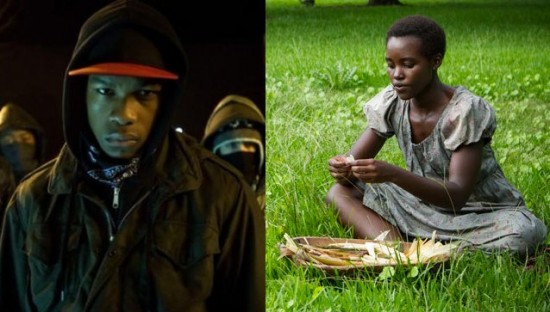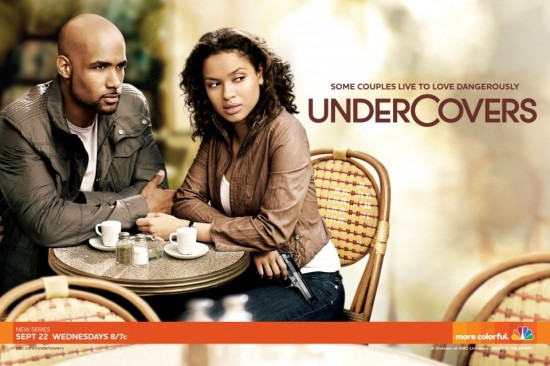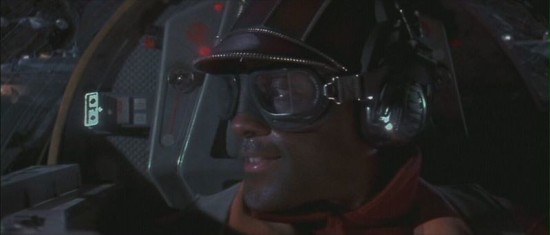Let's Talk About JJ Abrams' Racially Diverse Cast For Star Wars 7
When the first photo posted of the initial grouping of cast members for Star Wars: Episode VII, some critics quickly jumped on the film for only adding one new female role. Those who were paying any attention, however, saw that the leaked Star Wars casting breakdowns featured multiple roles for women. The trade papers did their homework, and hours later reported that two more female roles were yet to be cast. Today those actresses were announced. (You can read about that here.)
With so much negative second-guessing and uninformed ranting about a story and characters we don't even know anything about yet, I thought I'd point out something positive.
We have heard rumblings that during the casting process, JJ Abrams has been fighting to hire a more racially diverse group of actors for Star Wars Episode 7 than has been seen in the series before. That's a move away from the traditional Anglo-Saxon ensemble of the earlier Star Wars movies. Now that the main crew is nearly complete, we have learned that the core Star Wars 7 cast is made up of a few racially diverse actors and actresses.
While racially diverse casts should be standard by now, a study in 2011 found that the lead actors in the top 172 Hollywood films were 89.5% white, leaving only 10.5% minority representation. The cast of Star Wars 7 breaks the pattern to some extent, and should be taken note of.
A few actors isn't a lot, but it is one third of the nine announced new cast members. And did I mention that this probably going to be the biggest movie of all time? Not bad, considering the original trilogy featured only one lead black actor on screen as a talking human character.
The History of Non-White Actors in Star Wars live-action Movies
Star Wars has a long history of ensemble casts featuring mostly white Anglo-Saxon actors. From my survey, it seems like there are only five substantial diverse human talking roles in the six Star Wars films. (Only one of which appeared in the original trilogy.)
Yeah, yeah. Before you comment — see the fine print at the bottom of this post for more specifics with respect to non-human characters.
Over the last few years, JJ Abrams has been trying to push for more racially diverse casts in the projects he directs and produces, when appropriate. His hands were mostly tied by continuity by the recent Star Trek films, but he has really been making an effort in his television productions.
In February 2013, Abrams appeared on the By The Way podcast with Jeff Garlin (I was in the live studio audience) where he talked about the time where his efforts to push diversity backfired on him on the television show Undercovers — and how it was all his fault. Abrams was approached by the head of Warner Bros television to create a television show like Hart to Hart. Instead of turning down the opportunity, Abrams decided to take on the challenge. Here is the story as Abrams describes it:
We came up with a show that was this honestly standard thing — it wasn't a great script. Well they said they wanted to make it and we cast the show and did it. The thing that killed me the most of all, frankly, was we wrote it without even thinking who would be in it.
We wrote these characters but when we went to cast it, one of the things I had felt, having been to the Emmys a couple times — you look around that room and you see the whitest f***ing room in the history of time. Its just unbelievably white. And I just thought, we're casting this show and we have an opportunity to do anything we want, why not cast the show with actors of color? Like not for sure, and if we can't find the actors who are great, we shouldn't, but why don't we make that effort because it wasn't written that way and isnt that the cooler version of doing this as opposed to saying 'this is an urban show'. It f***ing kills me when they call something 'an urban movie' like its a separate thing, like 'its that thing over there.'
So we started casting the show and we have some wonderful actors and I direct the pilot and its just not very good. its sort of this thing that was just sorta obligation-based. I felt especially guilty based on the fact that we ended up casting the show as we did because it could then be used, even if its never said, as an excuse for the networks to say 'see, look what happens when you cast a show with people of color, it fails miserably.'
It was very important to me that the show work, but it didn't. But the key is that the reason it didn't work was not because of those actors, it was because of me. It shouldn't have happened. I shouldn't have said, 'okay I'll do Hart to Hart'. Because I didn't say 'I want to f***ing do Hart to Hart.' I woke up and saw the guy who is employing me basically, the guy who is helping me run this whole company, really really wants Hart to Hart and I tried to do that. It ended up failing and it wasn't just a failure to me, it was a failure on a larger scale which I really really regret."
The Fine Print
While I could only find five substantial diverse human talking roles in the first six Star Wars films, there are other non-white cast members in the background, hidden behind performance capture computer animation and voice over. Here are a few examples:
Also some of the alien creatures were voiced and/or created based on Earth's diversity. Wesleyan thesis papers have been written in-depth about the way race plays a role in Star Wars, particularly how racial stereotypes are reflected in the alien creatures of a galaxy far, far away. We don't know how JJ Abrams will be handling those criticisms in the seventh film, but we do know he's making extra efforts to make the cast more diverse.
Thanks to Brian Truitt and Chad Satterfield who added to the twitter conversation which spawned this post.



